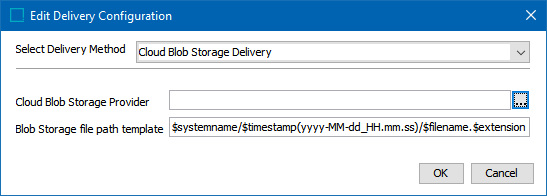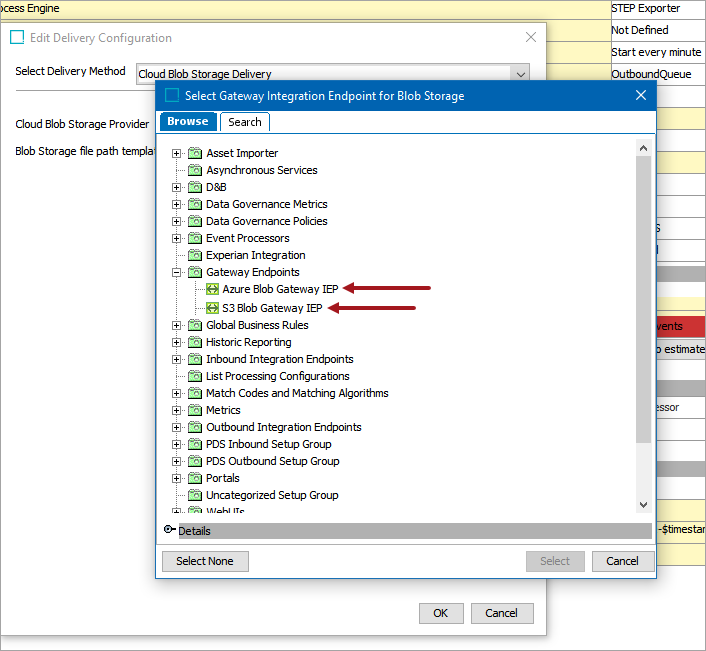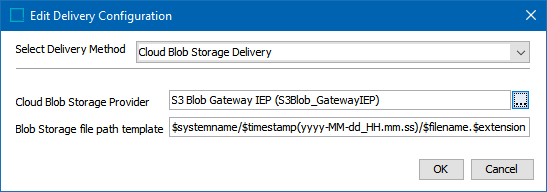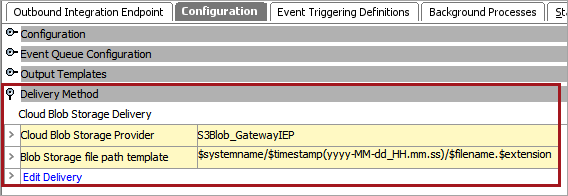The Cloud Blob Storage Delivery method makes it possible to deliver exported files to blob storage. Amazon S3 and Microsoft Azure are supported. This delivery method is available in Export Manager and OIEPs.
Note: The Cloud Blob Storage Delivery Method is similar to the Azure Blob Storage Delivery Method here. The difference between the setup and functionalities is that the Cloud Blob Storage Delivery plugin is part of the STEP baseline, can also be used for Amazon S3, and the Export Manager and OIEP configurations use the gateway integration endpoints versus having separate delivery method integration properties.
Prerequisites
A blob storage gateway integration endpoint must be configured before moving ahead with the Export Manager or OIEP setup.
-
For Amazon S3, directions for setting up this endpoint are in the Configuring a Gateway Integration Endpoint - Amazon S3 Blob Storage topic in the Data Exchange documentation here.
-
For Microsoft Azure (ABS), directions for setting up this endpoint can be found in the Configuring a Gateway Integration Endpoint - Microsoft Azure Blob Storage topic in the Data Exchange documentation here.
Also, buckets (S3) and containers (ABS) must be created. If they do not exist in advance, you will get an exception error during the delivery process.
Configuring the OIEP Delivery
For information on a parameter, hover over the parameter label to display help text.

-
From the Select Delivery Method parameter dropdown, choose Cloud Blob Storage Delivery.
-
Click the ellipsis button (
 ) to the right of the Cloud Blob Storage Provider parameter, select a gateway endpoint configured for blob storage, and click the Select button. The name and ID of the selection displays in the Edit Delivery Configuration dialog.
) to the right of the Cloud Blob Storage Provider parameter, select a gateway endpoint configured for blob storage, and click the Select button. The name and ID of the selection displays in the Edit Delivery Configuration dialog.

-
Configure the Blob Storage file path template using the available variables:
-
$systemname – The STEP system name. Useful when several STEP systems are delivering to the same blob container.
-
$timestamp([YMDHMS Format]) – Delivery timestamp. Desired format to be supplied in Java SimpleDateFormat compatible format.
-
$filename – Name of the file produced.
-
$extension – The extension of the file produced.
-

In addition to selecting the appropriate connection string and container, you can make use of Azure Blob Storage virtual directories. If the virtual directories do not already exist, the plugin creates them. As mentioned in the Prerequisites section, buckets (S3) and containers (ABS) must exist in advance or you will get an exception error during the delivery.
Important: Existing files with the same virtual directory path and file name are overwritten.
-
On the Edit Delivery Configuration dialog, click the OK button to save the delivery method.
The configuration is displayed in the OIEP editor.
